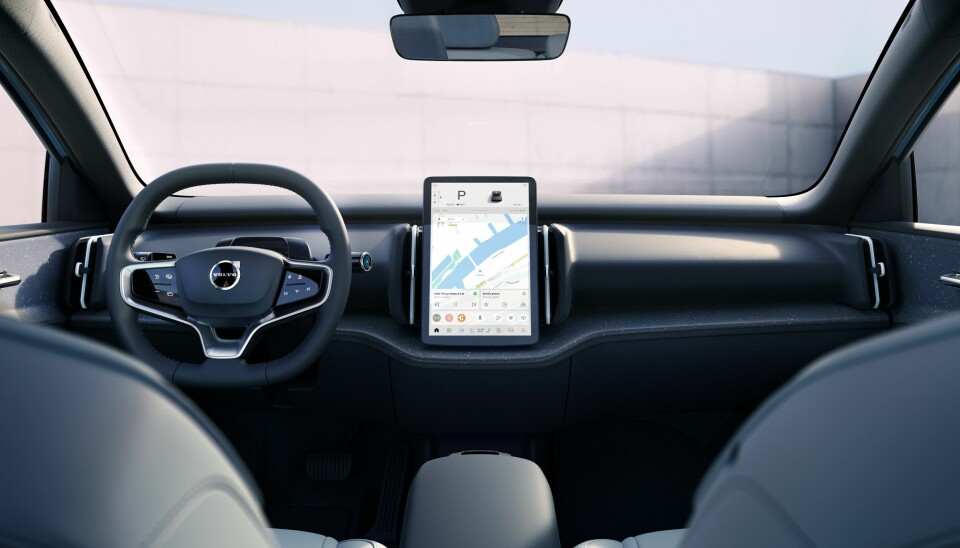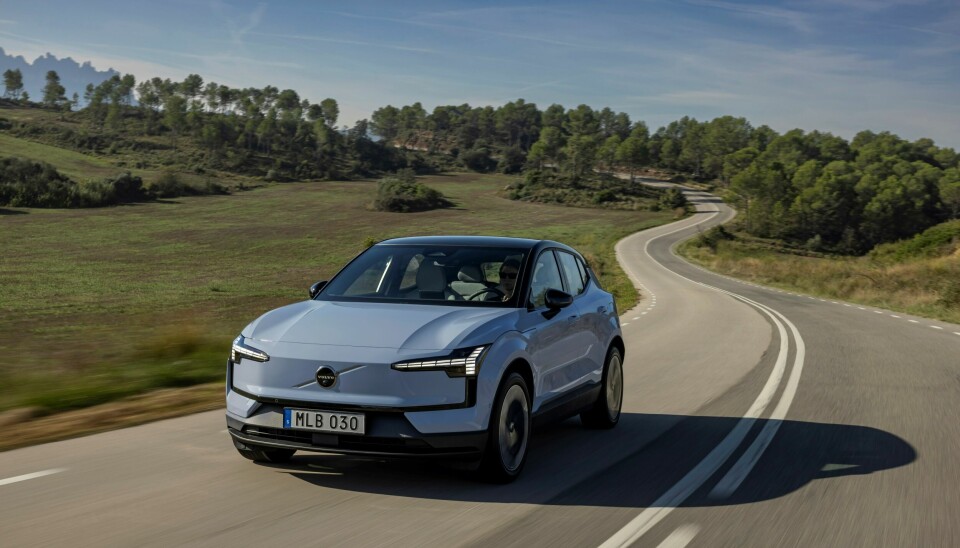Volvo EX30 in ADAS and UX Test
Swedish Minimalism

Safety has always been in Volvo's DNA. But how safe do the assistance systems of the EX30 feel? How user-friendly are they and what can the infotainment system do? Our practical test provides the answers.
Is it because of its Swedish homeland that the EX30 automatically seems to recognize its driver's need for warm hands upon entering? We don't know. But at the end of November with an outside temperature of six degrees, it is a quite pleasant welcome. In general, the compact SUV heats up very quickly, making wearing a jacket unnecessary even for short distances. But before you can even get going, the big search begins. In the EX30, Volvo has taken the trend towards minimalism to the extreme. Tactile buttons or controls? At first glance, you search for them in vain. Only the controls for opening the windows remain at the end of the armrest in the middle. A classic cockpit behind the steering wheel or a head-up display is also missing. Looking forward reveals only the road.
What can be good on one hand, at the latest when looking to the right, or in the middle at the 12.3-inch touchscreen in portrait format, causes distraction. After all: An infrared sensor on the steering column reliably tracks the driver's eyes and promptly alerts if the gaze lingers too long on the tablet in the middle. At the first signs of fatigue, in the practical test a simple yawn was enough, a coffee cup blinks in white along with a message prompting the driver to take a break. If there are even stronger signs of fatigue, the coffee cup is supposed to blink in red.
Simplicity is key

What you have to give the Scandinavians credit for: It takes only a few minutes to become familiar with the operating system. This is not least due to Android Automotive with services like Google Maps and Google Assistant. Even Apple hardliners should have no problem quickly getting used to the menu navigation. For those whose longing for the Apple universe is still too great, there is the option to activate CarPlay wirelessly. In general, Volvo succeeds very well with the EX30 in quickly unraveling the initial confusion. From now on, the joy of simplicity prevails. The right selector lever, usually used for windshield wipers, is used for gear selection in the EX30. The park mode is activated at the push of a button, and the cruise control can be activated by fully pulling down the right lever, which works reliably. The only remaining tactile buttons are located in ninefold on the steering wheel, including for volume, track change, cruise control, voice control, and a freely assignable button.
Concert feeling with the Swedish House Mafia
The probably even more famous Swedish export hit with two identical vowels in the name is called Abba. And whether it's their world hits or the rich basses of the Swedish House Mafia - the Harman Kardon Premium Sound System provides, as promised by the manufacturer, a unique sound experience. The soundbar, which houses several speakers of the audio system, extends across the entire width of the dashboard. It is located under the windshield and integrates seamlessly into the cockpit design. Crystal clear sounds make the hearts of music fans beat faster. The user experience is truly satisfied to the fullest here. The only downside: Due to the lack of buttons, the volume of the music can only be controlled via the button on the steering wheel, and this did not always respond reliably in the test. On the tablet, it always takes two clicks to be able to select the volume control.
Driving Fun Causes Charging Frustration
Despite its SUV shape, the EX30 conveys a go-kart feeling. Steering, accelerating, and braking are a lot of fun. The top version we tested, the Twin Motor Performance AWD with all-wheel drive and two electric motors producing a combined 315 kW (428 hp), accelerates the EX30 from zero to 100 km/h in 3.6 seconds. It feels like the start of an airplane when the Swede goes full throttle almost silently. Despite the rain-soaked road, the car remains extremely stable and gives a very safe impression. This experience also deserves an A with a star. However, the consequences of the short-term adrenaline kick are rather poor. As expected, the range suffers massively from a dynamic driving style. It's enough if you constantly drive more than 110 km/h. To get from Cologne to Lehrte, just past Hanover, the car had to stop at the charging station three times in the practical test. Unfortunately, the maximum 153 kW was very rarely reached. According to Volvo, the maximum range of the 69-kWh battery is 450 kilometers. However, at temperatures around five degrees and an average speed of 125 km/h on the highway, this is not the case.
How safe is Volvo's safe space?
With advanced external and internal sensors, the Advanced Driver Assist System (ADAS) of the EX30 offers a high level of driver support, according to the OEM. However, in practical tests, the EX30 still reveals weaknesses. The so-called Pilot Assist relies on the presence of lane markings. But even when they are present, the system does not always correctly recognize the lane markings. Several times, the car steered alarmingly sharply towards the ditch, requiring personal safety intervention by taking control of the steering wheel. In general, the system sometimes intervenes too strictly, which conveys an uneven driving experience. Braking for suddenly appearing obstacles also sometimes occurs too abruptly. Parked vehicles on the roadside are occasionally misinterpreted as vehicles ahead, triggering unnecessary braking. There is room for improvement here.
In general, however, the driver assistance systems offer many customization options. Lane keeping and lane change assistants can be activated separately, as well as adjustable maximum speeds and distances to vehicles ahead. However, all these things are also standard with many competitors. The one-pedal drive system works particularly well. When you take your foot off the accelerator, the EX30 brakes independently, which significantly reduces the use of the actual brake. Deceleration works pleasantly softly, but at the same time strong enough to quickly go from 100 to 70 km/h, for example, without having to step on the brake. Controlled by a central computing unit, five radars - a front radar and two side radars at the front and rear - as well as a front camera provide a precise 360-degree view around the vehicle. At the rear, the Volvo EX30 is also equipped with a wide-angle rearview camera and four ultrasonic sensors. Current map data also provides the latest information about the road environment.
Conclusion
The Volvo EX30 is fun. The operation is quickly learned and largely intuitive. Volvo's decision to rely heavily on external partners like Nvidia, Qualcomm, or Google pays off. The operating system runs very smoothly. The outstanding feature is the magnificent sound system, which is anything but standard in a vehicle with a starting price below 37,000 euros. However, as with most electric cars, driving in winter on long distances is not enjoyable. Too often, recharging is necessary. At least Google Maps reliably suggests suitable charging stations here. In terms of assistance functions, the EX30 performs solidly. The Pilot Assist, however, still reveals some weaknesses. At least you quickly notice what the EX30 can and cannot do. Once adjusted to it, using the assistance systems and especially the infotainment is ultimately a positive experience.
This article was first published at automotiveit.eu
















